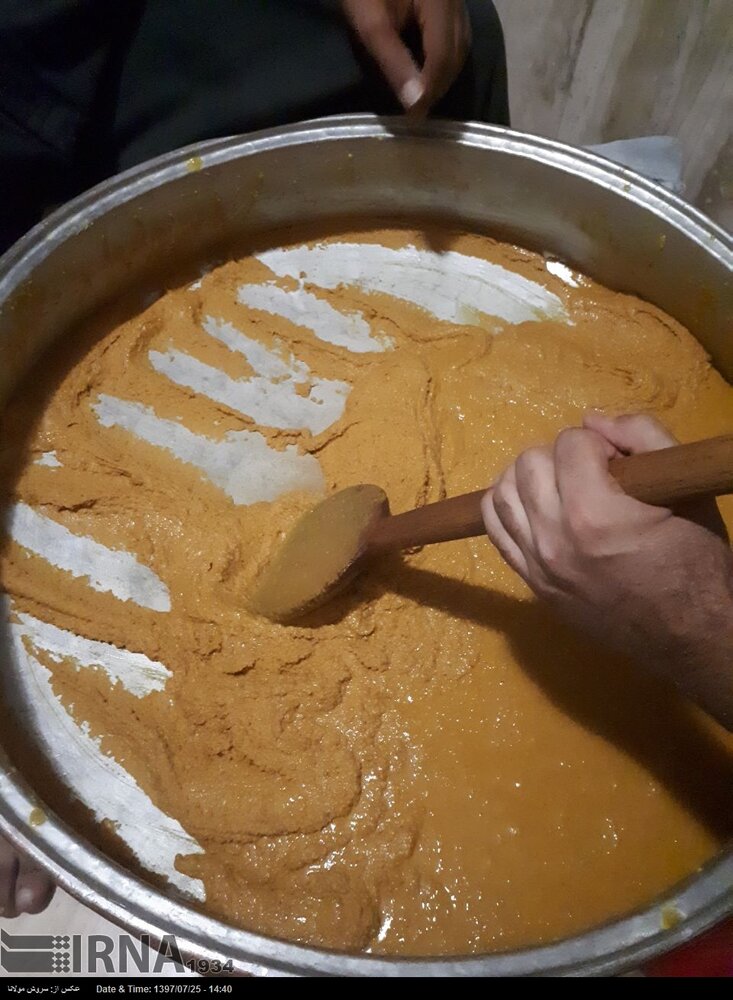Taste unique dairy product an Iranian tribe makes for millennia

MASHHAD – In the second half of the last month of spring this year we decided to leave Mashhad on a double-decker train at 1: 35 a.m. to Semnan city, the capital of Semnan province, and we arrived at a hotel around 9 a.m. Let me remind you that before every trip I get used to studying and taking notes on different aspects of historical and natural attractions, customs, weather and foods of the region.
So, after a short break and having an address, we went to a restaurant to eat some Semnan local food and then visit the historical sites of Semnan city such as the Jame Mosque and its famous minaret, the Imam Mosque (King or Sultanate), the Bazaar and Takaya (kind of Mosque) and its caravanserais, the gate of the citadel, the old triple settlements such as Koushmaghan, Zaveghan and Kadivar; the Badgir mansion, and the tomb of Pir Najm-al Din Semnani.
And we also visited two towns of Sangesar (Mahdishahr) and Shahmirzad fifteen and twenty kilometers north of Semnan, respectively, which are quite different from Semnan desert city in terms of air conditions, and we visited historical attractions such as Hojabr Palace, Darband Cave located in Sangesar, as well as the Khane gol traditional hotel and one of the largest walnut gardens in the world and Shahmirzad's gardens alley.

Although Semnani dialect is from Persian (Pahlavi) dialect but it is very difficult for us Iranians to understand it and we could not able to understand their language at all, but I found it fascinating. Besides linguistic wonder, a dairy product named "Aroushe" in Sangesar was interesting to me. I had never heard its name and not tasted it, and it seems that there is no similar product anywhere in Iran and the world.
Aroushe is one of the unique dairy products of Sangesar nomads and it dates to more than 3,000 years ago. It is rich in calcium. It is made from fresh sheep's milk or goat's cheese. The nomads and shepherds believe that cattle graze in the highlands and pastures full of aromatic flowers and medicinal plants are better and suited their milk for making of Aroushe and makes it more delicious.

The method of preparation is almost the same in different regions of Semnan province and Sangesar tribes and is as follows:
Put fresh milk on heat to warm up and add rennet cheese to the milk then the cheese is made. The cheese is poured into a thin cloth to draw its water and then poured the cheese of without water into a large copper pot and placed on mud stoves. The shepherd takes some soil and mixes it with a little water and coats the mud gently around the pot so that the flames do not get out of the pot and the oven, which also helps keep the shepherds safe during work and it is also a non-flame of fire.
Then the person in charge of the oven's lighting and refueling ignites a very small fire, and the other person raises the sleeve and grabs the cheese inside the pot. Of course, usually men grab or crush the cheese, or women who have more power. This process of cheese grating takes a maximum of 20 minutes, when one must turn the hard cheese by grabbing it and slowly turning it into a dough.

At this time, the two shepherds stand on either side of the pot, stirring constantly with a large wooden spoon, until the cheese is golden. Depending on the amount of material used, the duration of the preparation varies from 3 to 5 hours. Due to the warm nature of Aroushe, it is mostly consumed with or without sugar and honey in the fall and winter seasons and does not require a refrigerator to store it.
AFM/MG
Leave a Comment